Answers to the Most Asked Cooking Questions
Wouldn’t it be nice to have a kitchen wizard next to you, ready with advice, when you experience those occasional "not again!" moments when cooking or baking? Well, I found this genius on yahoo.com, taken from the Rachel Ray Magazine. Here are her answers to the most asked cooking questions—see if you haven’t asked one or two of these:
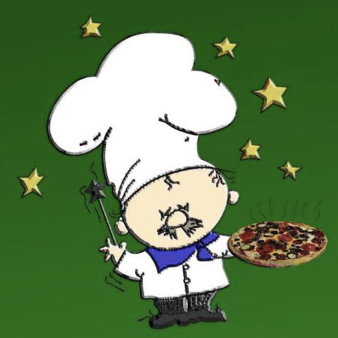
QUESTION 1: Does meat REALLY need to rest before I slice and serve it? Answer: It’s best. Proteins are tight in hot meat, and all the juices get pushed to the middle. Letting it rest for a few minutes allows the proteins to relax (which makes it more tender) and evenly distributes the juices.
Resting time depends on meat size: A whole turkey might need 20 minutes, while a steak that serves two will only need 8 to 10 minutes. If you're worried about it getting cold during that time, keep it warm by loosely tenting it with foil.
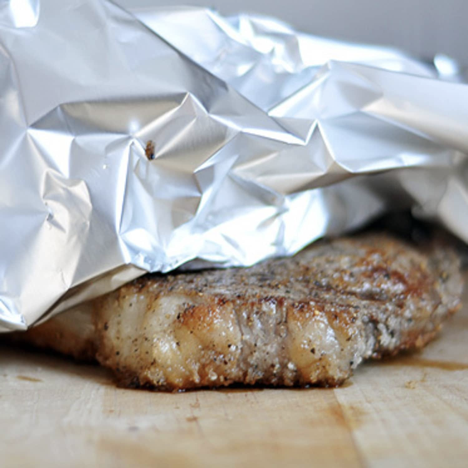
QUESTION 2: Do bone-in chicken breasts taste better than boneless? Answer: It's true! Any meat that's cooked on the bone is going to be juicier and more flavorful. But there's a catch: Bone-in cuts of meat can take twice as long as boneless to cook. So if you're crunched for time, boneless chicken and chops are smart choices.
QUESTION 3: Recipes often advise reserving some pasta cooking water to use in the sauce. Won’t regular water work as well? Answer: Not really. The cooking water has starch in it from the pasta. When you add it to sauce, the sauce thickens and clings better to the pasta. To reserve some, either drain the water into a bowl, or use a ladle or dunk a glass measuring cup in the pot before you strain the pasta. Mix it into your sauce a few tablespoons at a time until you're happy with the consistency.
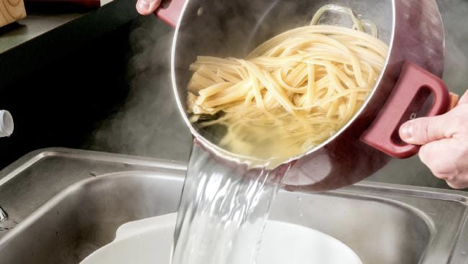
QUESTION 4: What cheeses make good substitutes for Parmigiano-Reggiano cheese? Answer: ANY hard, aged cheese that's good for grating works well. Perfect choices: Grana padano (is cheaper, milder and melts a bit easier than parmigiano-reggiano), asiago (is sharp yet buttery), and pecorino-romano (has a more pungent flavor). And
Alert: when buying Parmesan, make sure the word "reggiano" is on the label—this means it's an authentic Italian cheese (otherwise, it's imitation, and nowhere near as delicious!).
QUESTION 5: What's a good rule of thumb for using dried herbs instead of fresh? Answer: In general, use one-third the amount of dried herbs to replace chopped fresh. If a recipe calls for 1 tablespoon chopped fresh thyme, use 1 teaspoon dried. The most flavor is released by adding dried herbs toward the beginning of cooking.
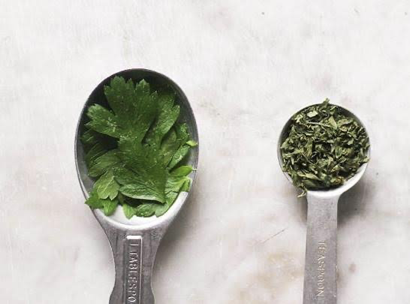
BUT caution: Cilantro, basil, and parsley are tender and delicate; they lose flavor when dried. If you don't have fresh on hand, just omit them; add more salt and pepper for flavor.
QUESTION 6: How do I avoid my meat sticking to the pan when I sear it? What am I doing wrong? Answer: Chances are you're not letting your pan get hot enough, so your meat isn't caramelizing- which means it's sticking to the pan because it's not getting a golden-brown crust. Heat a large, heavy skillet over medium-high heat for at least five minutes. (Never use a nonstick pan for this purpose; because it has a special coating, it shouldn't be preheated when empty.)
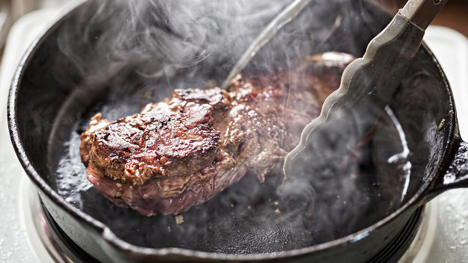
Then add oil; as soon as it starts to shimmer, add your meat in batches (to avoid overcrowding the pan). It'll be tempting to move the meat around or lift it to see how it's doing, but the secret to a nice sear is to leave it undisturbed for at least two minutes per side.
QUESTION 7: Can I leave wine out of a recipe? Answer: Yes. Just use the same amount of whatever other liquid the recipe calls for. If you're making risotto, for example, add more chicken broth or water. If there aren't other liquids in the dish, replace the alcohol with a splash of something acidic, like lemon juice or cider vinegar. (If there's cream in the recipe, however, it will curdle, so in those cases just omit the liquid altogether.)
QUESTION 8: If a recipe calls for coarse salt can I just use table salt? Answer: NO, NO, NO. Table salt grains are much smaller than coarse salt grains, so a teaspoon of table salt is a lot more potent than a teaspoon of coarse salt. You don't have to invest in fancy sea salt; kosher salt is an affordable coarse type that works well in most recipes. If you only have table salt handy and the recipe calls for coarse, start by putting in half as much table salt, and taste the dish from there.
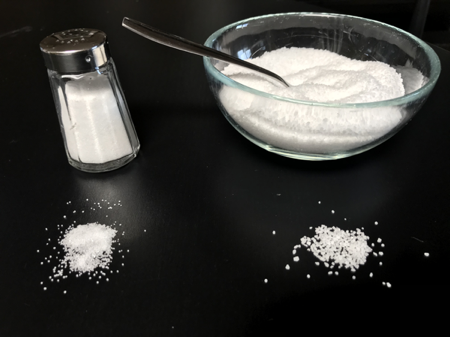
QUESTION 9: When a recipe calls for just butter, should I use salted or unsalted? Answer: When baking, you generally want to use unsalted butter. Cooking with unsalted butter gives you more control over how salty the final dish tastes, so it’s a good idea. However, keep salted butter at the table to spread on fresh bread!

QUESTION 1: Does meat REALLY need to rest before I slice and serve it? Answer: It’s best. Proteins are tight in hot meat, and all the juices get pushed to the middle. Letting it rest for a few minutes allows the proteins to relax (which makes it more tender) and evenly distributes the juices.
Resting time depends on meat size: A whole turkey might need 20 minutes, while a steak that serves two will only need 8 to 10 minutes. If you're worried about it getting cold during that time, keep it warm by loosely tenting it with foil.

QUESTION 2: Do bone-in chicken breasts taste better than boneless? Answer: It's true! Any meat that's cooked on the bone is going to be juicier and more flavorful. But there's a catch: Bone-in cuts of meat can take twice as long as boneless to cook. So if you're crunched for time, boneless chicken and chops are smart choices.
QUESTION 3: Recipes often advise reserving some pasta cooking water to use in the sauce. Won’t regular water work as well? Answer: Not really. The cooking water has starch in it from the pasta. When you add it to sauce, the sauce thickens and clings better to the pasta. To reserve some, either drain the water into a bowl, or use a ladle or dunk a glass measuring cup in the pot before you strain the pasta. Mix it into your sauce a few tablespoons at a time until you're happy with the consistency.

QUESTION 4: What cheeses make good substitutes for Parmigiano-Reggiano cheese? Answer: ANY hard, aged cheese that's good for grating works well. Perfect choices: Grana padano (is cheaper, milder and melts a bit easier than parmigiano-reggiano), asiago (is sharp yet buttery), and pecorino-romano (has a more pungent flavor). And
Alert: when buying Parmesan, make sure the word "reggiano" is on the label—this means it's an authentic Italian cheese (otherwise, it's imitation, and nowhere near as delicious!).
QUESTION 5: What's a good rule of thumb for using dried herbs instead of fresh? Answer: In general, use one-third the amount of dried herbs to replace chopped fresh. If a recipe calls for 1 tablespoon chopped fresh thyme, use 1 teaspoon dried. The most flavor is released by adding dried herbs toward the beginning of cooking.

BUT caution: Cilantro, basil, and parsley are tender and delicate; they lose flavor when dried. If you don't have fresh on hand, just omit them; add more salt and pepper for flavor.
QUESTION 6: How do I avoid my meat sticking to the pan when I sear it? What am I doing wrong? Answer: Chances are you're not letting your pan get hot enough, so your meat isn't caramelizing- which means it's sticking to the pan because it's not getting a golden-brown crust. Heat a large, heavy skillet over medium-high heat for at least five minutes. (Never use a nonstick pan for this purpose; because it has a special coating, it shouldn't be preheated when empty.)

Then add oil; as soon as it starts to shimmer, add your meat in batches (to avoid overcrowding the pan). It'll be tempting to move the meat around or lift it to see how it's doing, but the secret to a nice sear is to leave it undisturbed for at least two minutes per side.
QUESTION 7: Can I leave wine out of a recipe? Answer: Yes. Just use the same amount of whatever other liquid the recipe calls for. If you're making risotto, for example, add more chicken broth or water. If there aren't other liquids in the dish, replace the alcohol with a splash of something acidic, like lemon juice or cider vinegar. (If there's cream in the recipe, however, it will curdle, so in those cases just omit the liquid altogether.)
QUESTION 8: If a recipe calls for coarse salt can I just use table salt? Answer: NO, NO, NO. Table salt grains are much smaller than coarse salt grains, so a teaspoon of table salt is a lot more potent than a teaspoon of coarse salt. You don't have to invest in fancy sea salt; kosher salt is an affordable coarse type that works well in most recipes. If you only have table salt handy and the recipe calls for coarse, start by putting in half as much table salt, and taste the dish from there.

QUESTION 9: When a recipe calls for just butter, should I use salted or unsalted? Answer: When baking, you generally want to use unsalted butter. Cooking with unsalted butter gives you more control over how salty the final dish tastes, so it’s a good idea. However, keep salted butter at the table to spread on fresh bread!
Sources:
- www.tripadvisor.com
- www.thekitchn.com
- www.news.com.au
- www.justapinch.com
- www.rachelrayshow.com
- www.en.wikipedia.org
 Alice Osborne
Alice Osborne
Weekly Newsletter Contributor since 2006
Email the author! alice@dvo.com
